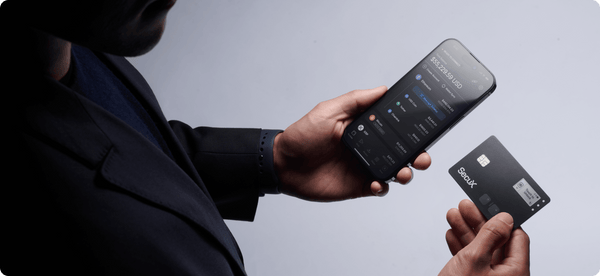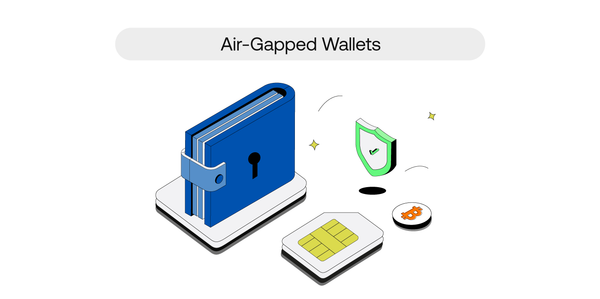How to Store Crypto on Cold Wallets?

How to store crypto on cold wallets is vital for digital asset protection and life. Cold wallets are offline storage media like USB drives or other hardware and protect against cyber theft better than hot wallets, which are online and vulnerable. Research found that over 80% of crypto thefts occur on internet-connected wallets. It proves cold storage's better security.
Cold wallets also decrease software-based system vulnerabilities and unlawful access. They protect against online fraud, phishing, and exchange weaknesses. Long-term holders should switch to cold storage for peace of mind and safety in the volatile cryptocurrency market.
Understanding Cold Wallets: A Comprehensive Guide
A cold wallet is a cryptocurrency digital wallet used for offline storage and security. Because they're offline, cold wallets can't be hacked like hot wallets. This storing strategy minimizes cyberattack theft risk for vast sums of cryptocurrency. Long-term crypto investors or 'holders' use cold wallets as a digital safe deposit box since they are more secure than hot wallets.
Types of Cold Wallets
The most common cold wallets are paper and hardware.
Paper wallets are tangible documents with a cryptocurrency address for receiving payments and a private key for spending or transferring cryptocurrency. They are printed as QR codes for transactions. Paper wallets are secure from internet hackers but may be damaged and lost.
On the other hand, hardware wallets, including USB drives, securely hold cryptocurrency keys. Offline private key generation and storage render them resistant to internet hacking. Hardware wallets may provide backup options and support several coins and blockchain apps. Furthermore, they can use pin codes and recovery phrases for enhanced security.
Storing Crypto on Paper Wallets: A Step-by-Step Guide

A public key (wallet address) and private key must be generated and printed to store cryptocurrency on a paper wallet. Start by visiting a paper wallet-generating website on a safe, offline computer. Downloading and executing the website's HTML code on an air-gapped computer increases security. Use the site's algorithm for keys after disconnecting.
Remember, the printer must not have Wi-Fi activated or linked to any network to avoid hacking. The key paper should be kept securely, watertight, and fireproof after printing. It is a classic example of how to store crypto on cold wallets for unhackable storage.
The Transfer Process to a Paper Wallet
Transferring crypto assets to a paper wallet requires preparations to avert irrevocable mistakes. Before any transaction, your money is in your digital wallet or cryptocurrency exchange. Use the 'send' or 'withdraw' option to send to the paper wallet's public address.
You must double-check this address since transactions to the wrong addresses are non-recoverable. For the transaction, send a modest test amount to ensure it works. Successful transfers place assets on the blockchain at the paper wallet's address. You may enter your public address into a blockchain explorer to view the transaction and balance.
Potential Risks and How to Mitigate Them
Paper wallets are secure against cyberattacks but are subject to physical risks and human errors. To mitigate them, generate keys in a private, safe environment without surveillance. Use tamper-resistant paper, store it in a waterproof and fireproof container, or laminate the paper wallet for durability. Multiple copies in secure places may also prevent harm or loss.
Never lose or distribute the private key since anybody with access may irrevocably transfer money. Last but not least, keeping up with paper wallet compatibility with newer cryptocurrency protocols may avoid technical mismatches that might lock up funds.
Using Hardware Wallets for Crypto Storage: Best Practices
Security and control are prioritized while storing cryptocurrency on a hardware wallet. First, hardware wallets store private keys offline to access and exchange cryptocurrency. The initial step in learning how to store crypto on cold wallets involves setting up the device. It includes creating a new wallet with a cryptographically secure private key.
This method consists of writing down and securing a 12- or 24-word recovery phrase. Undoubtedly, it is the sole way to retrieve money if the hardware wallet is lost or destroyed. Choose a wallet that supports your cryptocurrency and update its firmware for security.
The Transfer Process to a Hardware Wallet
Transferring cryptocurrency to a hardware wallet requires securing and managing digital assets. The cryptocurrency must be compatible with the hardware wallet first. After checking compatibility, build a hardware wallet receiving address. Transfer money from an exchange or wallet using this address, a string of letters and numbers. Double-check the address before transferring funds. Keep in mind that even a little mistake might cause permanent loss.
Some users want to test a little transaction before moving the whole sum for security. The hardware wallet will securely hold the money once the transaction is broadcast to the cryptocurrency network and recorded on the blockchain. Again, monitoring the transaction with blockchain explorers until confirmation is vital to assure transfer success.
Risks Involved and Safety Measures to Consider
While hardware wallets are generally safer than online wallets, they are not without risks. The threat of physical damage or loss of the wallet necessitates the secure storage of the recovery phrase to regain access to funds. Additionally, it's crucial to guard against phishing attempts and counterfeit software updates. Always download updates directly from the manufacturer's website and scrutinize communications from the wallet provider.
Contrary to needing constant connectivity, the associated app does not always need to be connected to the hardware wallet. It can securely display the account balance and market value at any time, ensuring 100% security.
To further secure sensitive details such as the recovery phrase, initiate the wallet setup in a secure environment. Consider using multisig features or a secondary hardware wallet for backup. For enhanced protection, engrave or punch the recovery seed phrase onto a waterproof and fireproof metal sheet, such as a stainless steel storage system like the SecuX XSEED Pro.
Regularly monitor your wallet for firmware updates and adhere to safe transaction practices. This includes validating addresses and using secure networks, which are essential steps in safeguarding your cryptocurrency investments.
Explore SecuX Hardware Cold Wallets
For those looking to understand how to store crypto on cold wallets, SecuX offers many hardware wallets, including but not limited to the V20, W20, and Shield BIO. Each wallet has military-grade EAL5+ chips (like the Shield BIO), dynamic keypad protection, and compatibility for over 10,000 tokens and coins. These devices protect your private key offline, limiting internet hazards. The Shield BIO has biometric identification for security, while the V20 and W20 have long battery life and giant touchscreens.
For more information about protecting your digital assets, visit SecuX Hardware Cold Wallet.

0 comments